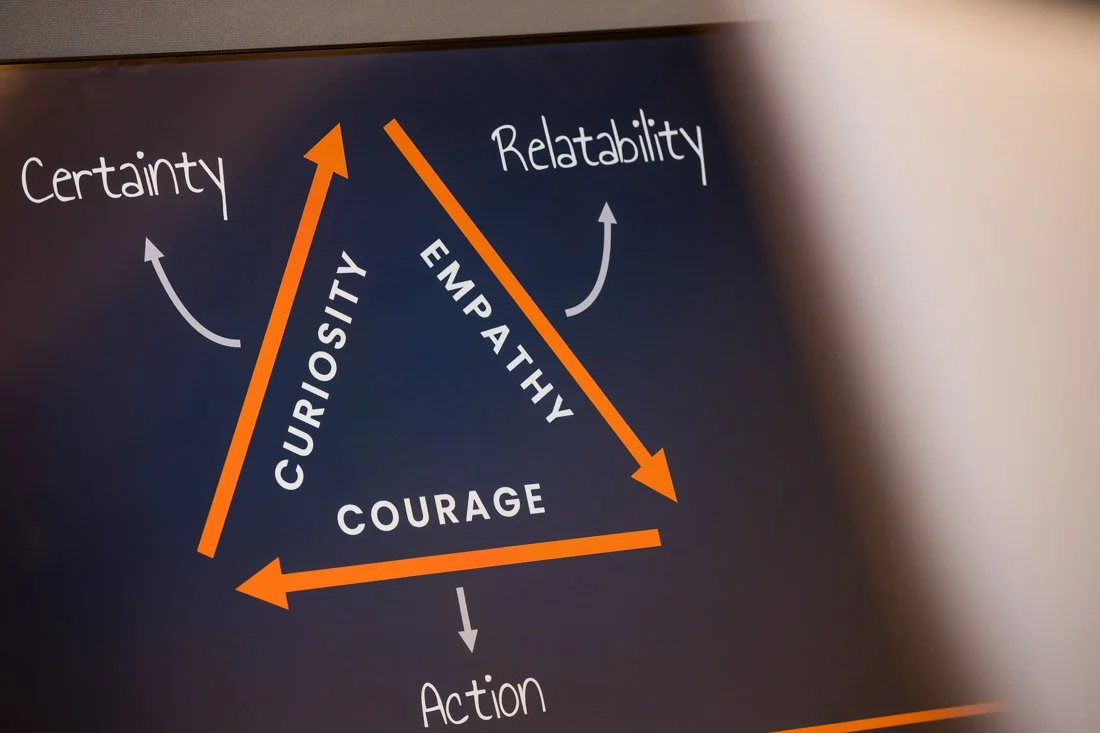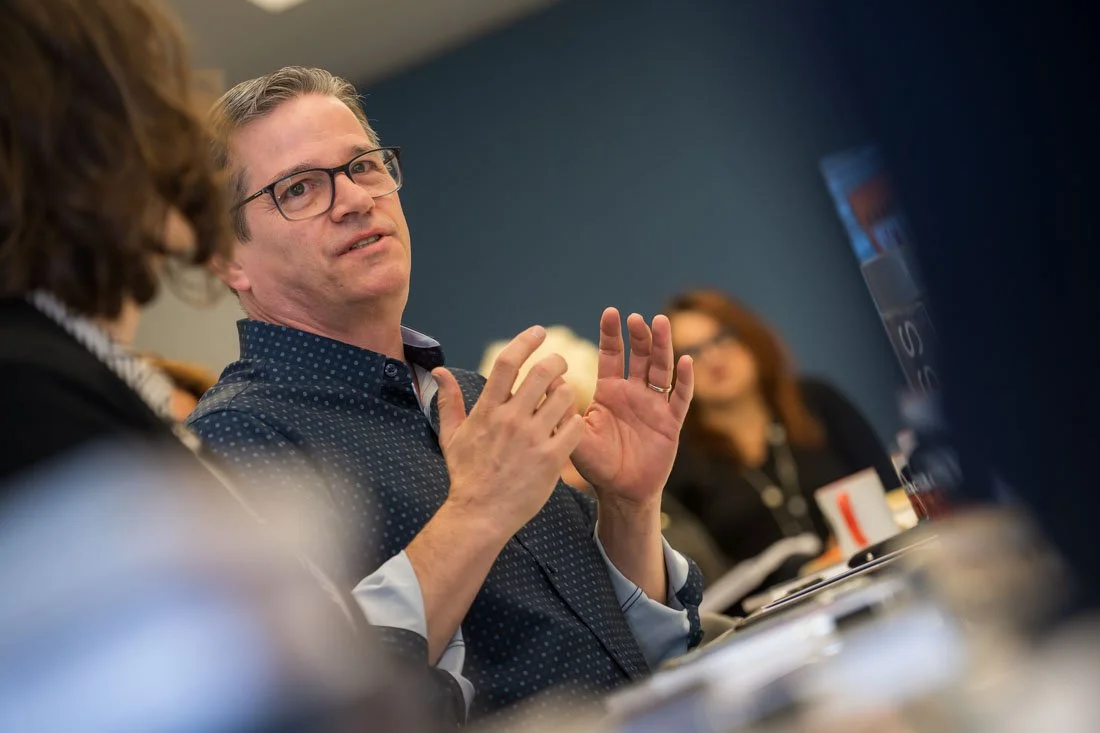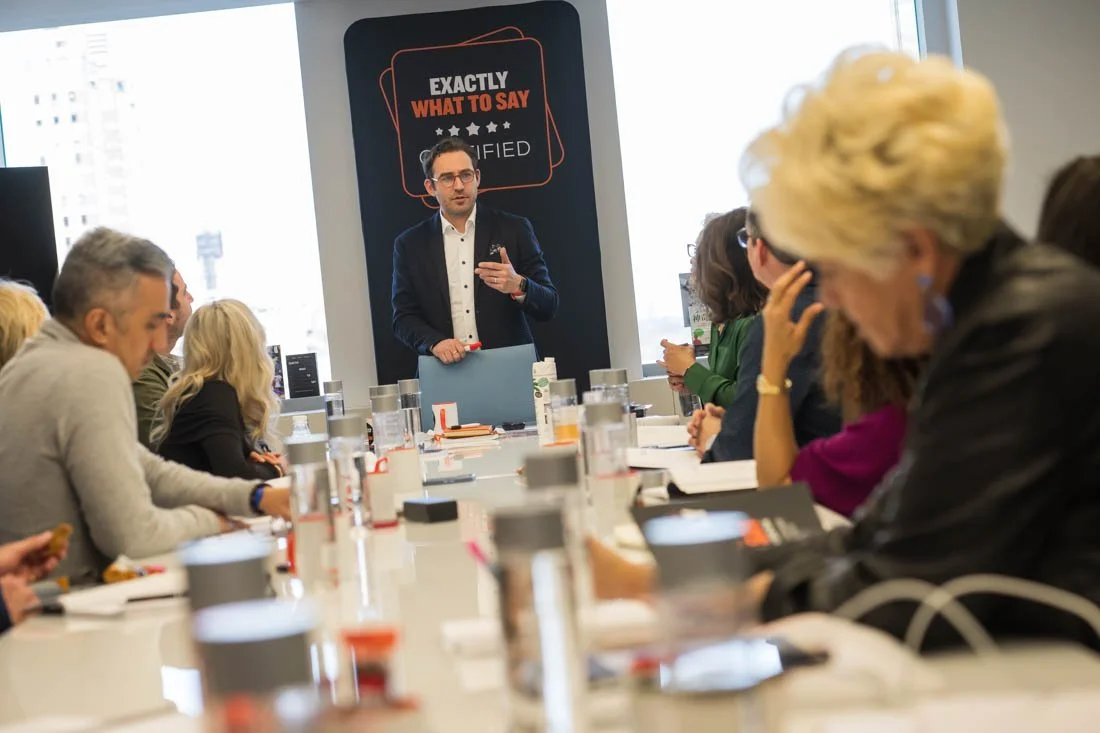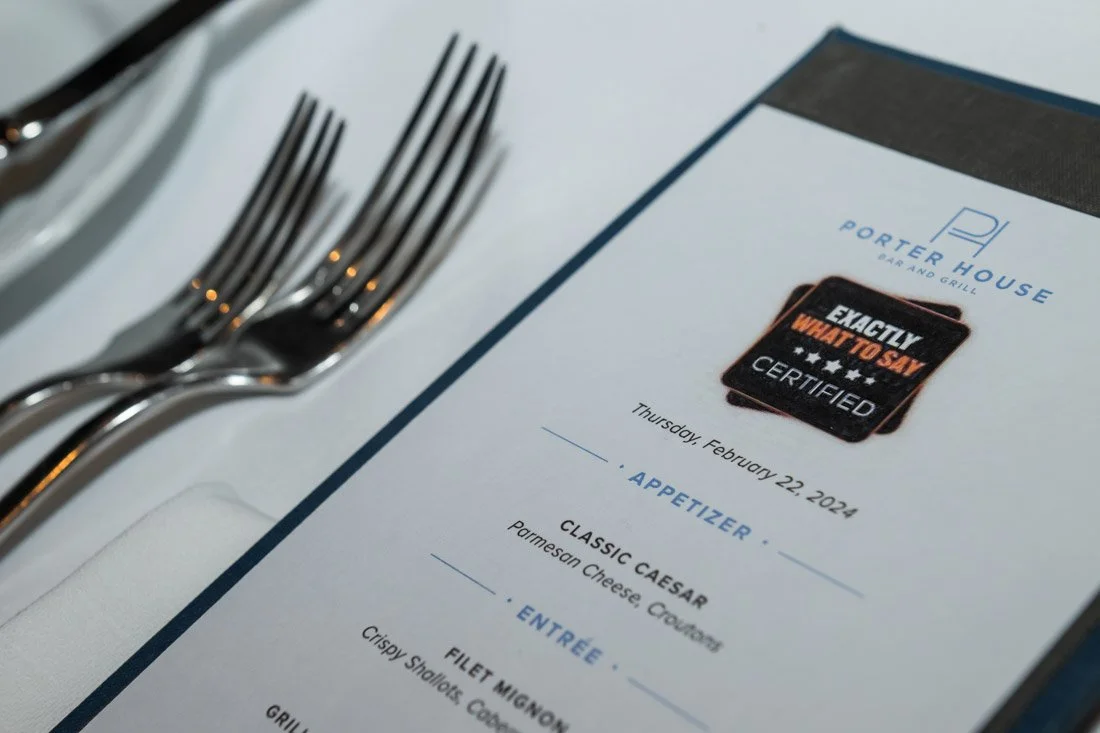What challenges were faced?
How did you overcome them?
The primary challenge for this event is the repetition of the same room and participants, making it essential to find ways to keep the photos unique and dynamic throughout. I focused on capturing different angles, expressions, and participants’ micro-movements - from leaning back to forward on the chair, from looking down to leaning on their arm, listening to someone speak - which creates unique vantage points when looking at the spaces between each participant. After all, the slightest changes in body posture can affect the entire composition of a photo - in both good and bad ways.
Additionally, another challenge to tackle was the lighting at the off-site dinner, which was quite dim, requiring me to overshoot with the flash to ensure that the photos were in focus and participants were captured with genuine expressions on their faces.
Finally, since I’m charged with capturing a variety of photos of each of the participants for the duration of the event, the challenge was to make sure that everyone was represented in the final portfolio, requiring an observant eye during both the session and the culling process. While it’s never a completely balanced portfolio, the goal is to get enough of everyone to provide them with opportunities to share these photos beyond the event itself.



